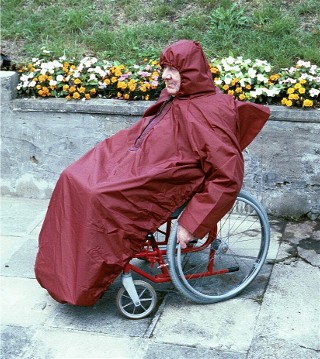
Waterproof wheelchair cape. Cape covers the user and wheelchair. Available with or without sleeves, optional fleece shoulder lining and extra long models to accommodate headrests and tall users.
Glanmor
Manufacturer's Product Description
The manufacturer has not provided any further information about this product
Manufacturer's Contact Details
Glanmor
208 High Street
Swansea
West Glamorgan
SA11PE
UK
01792642868 sales@glanmor.co.ukKey Features
- integral drawstring hood
- horizontal rear aperture
- storm flap to allow access to handles
- neck opening
- double zip puller to enable internal or external operation
- two sizes
Product Dimensions
No dimensions have been specified for this product
Product Specification
No product specification has been specified.